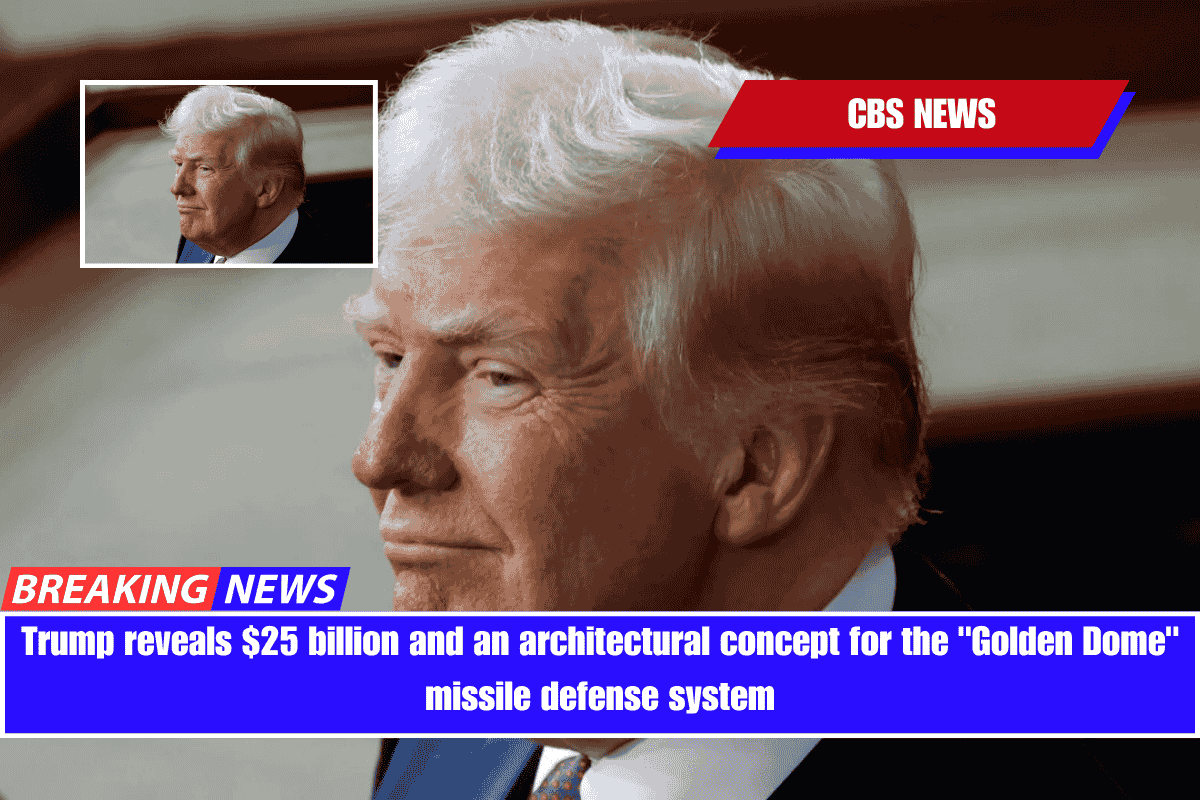Washington — President Donald Trump announced on Tuesday that his administration has chosen an architectural design for a “Golden Dome” missile defense system to protect the United States from foreign threats.
The president also stated that the budget package Republicans are currently negotiating on Capitol Hill will include an initial $25 billion to start construction on the missile defense system. Mr. Trump stated that the project’s total cost will be around $175 billion, though it could be much higher. Congress has yet to fund the project, but Mr. Trump has told reporters that he believes it will be easy to fund on Capitol Hill.
“Today, I’m pleased to announce that we have officially selected an architecture for this cutting-edge system that will deploy next-generation technologies across the land, sea, and space, including space-based sensors and interceptors,” the president said in the Oval Office with Defense Secretary Pete Hegseth.
Mr. Trump stated that the project should be “fully operational by the end of my term,” which would be before January 2029. The president stated that the system will be built in states such as Alaska, Florida, Georgia, and Indiana, and that it will involve a number of American defense and technology companies that have yet to be chosen.
The president stated that Canada wishes to participate in the project, and that the United States wishes to assist Canada in any way possible.
“Once fully constructed, the Golden Dome will be capable of intercepting missiles even if they are launched from other sides of the world and even if they are launched from space,” said Mr. Putin. “And we will have the best system ever built.”
The president told reporters that he proposed a comprehensive new missile defense system to US military leaders, who agreed, not the other way around.
“I suggested it, and everyone said, ‘We love the idea, sir.’ That’s the way it has to be, right? But they want it. When it was suggested to them, they were very interested.
For months, the president has expressed a desire for an Israeli-style defense system. In his March joint address to Congress, the president asked for funding for the system.
“I’m asking Congress to fund a state-of-the-art Golden Dome shield to protect our homeland,” the president stated during his speech to Congress. “All made in the United States. Ronald Reagan wanted to do it a long time ago, but the technology was nowhere near ready. But now we have technology. It’s amazing, actually. Other places also have it. Israel has it, other countries have it, and the US should have it as well.”
A new, unclassified assessment from the Pentagon’s intelligence agency reveals what threats the United States must defend itself from over the next decade.
The Defense Intelligence Agency, or DIA, predicts that missile threats to the United States will grow in size and sophistication as foreign actors deploy intercontinental ballistic missiles, submarine-launched ballistic missiles, two types of hypersonic weapons, land attack cruise missiles, and fractional orbital bombardment systems.
Mr. Trump envisions a “Golden Dome” in the style of Israel’s Iron Dome, a mobile all-weather air defense system that has intercepted projectiles since its installation in 2011. However, Israel’s Iron Dome primarily defends against shorter-range threats, such as rockets, while it also has two other air defense systems to defend against missiles, which are increasingly being used in conflict.
“Missile threats to the U.S. homeland will expand in scale and sophistication in the coming decade,” according to the investigation. “China and Russia are developing a variety of novel delivery systems to exploit gaps in the current US ballistic missile defenses, but traditional ballistic missiles — which are guided during powered flight and unguided during free flight — will continue to pose the most serious threat to the homeland. North Korea has successfully tested ballistic missiles with enough range to reach the entire country, and Iran has space launch vehicles that could be used to develop a military-ready ICBM by 2035, if Tehran chooses to pursue the capability.”
According to the assessment, by 2035, China, Iran, and North Korea will have significantly more intercontinental ballistic missiles, and “there is no part of the homeland which cannot be struck by existing ICBMs.” Although Iran does not currently have any known ICBMs, the DIA estimates it will have 60 by 2035. Keeping Iran from becoming a nuclear power has been a key goal for the United States and its allies.
The assessment also warns that China’s submarine-launched ballistic missiles will grow in number by 2035, and that “there is no part of the homeland which cannot be struck by existing adversary SLBMs.” Russia also has submarine-launched ballistic missiles.
Furthermore, the assessment predicts that China and Russia will increase their boosted hypersonic weapons multiple times by 2035. According to the report, Russia and China can use these systems to reach certain parts of the United States. According to the report, China and Russia’s land attack cruise missile capacity will increase significantly by 2035, with both countries capable of reaching parts of the United States.
Finally, the report states that Russia and China are expected to have fractional orbital bombardment systems by 2035. These will be able to orbit the globe and pass over the South Pole to avoid detection.


















Leave a Reply